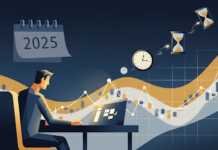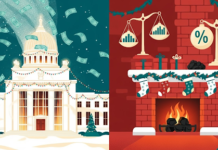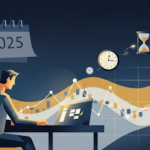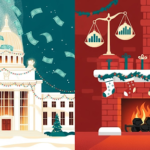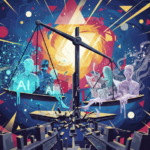AI Meets Wall Street: Predicting 2025’s Market Wildcards
Welcome to The Market Pulse, where today, we’re diving into an intriguing face-off: AI-generated market predictions vs. seasoned Wall Street forecasts. From geopolitical tensions and energy risks to AI booms and busts, both humans and machines are mapping out what could shake up markets in 2025.
What’s amazing? Despite their differences, AI and Wall Street see common threats like cybersecurity, global debt, and supply chain disruptions. Yet, each adds a unique twist—AI worries about energy shortages, while humans keep one eye on potential political turbulence (think trade wars or central bank independence).
Stick around as we explore these interesting predictions, learn about the tail risks that could make or break portfolios, and unpack fun trivia on the quirks of market forecasting in our Fun Corner. Plus, in This Week I Learned, we’ll dive into the concept of tail risks—a term often thrown around but rarely understood.
Ready to get smarter about 2025? Let’s jump in.
This Week I Learned…
What Are Tail Risks, and Why Do They Matter?
This week, we’re breaking down the concept of tail risks—a phrase you’ve probably heard but may not fully grasp. Simply put, tail risks refer to the extreme events at the far ends of a probability curve. These are the low-probability, high-impact surprises that can disrupt markets—either catastrophically (think a financial crisis) or favorably (a breakthrough technology).
Here’s why they matter: tail risks aren’t just theoretical. In recent years, events like COVID-19, geopolitical shifts, and massive tech breakthroughs have all proven that the “unlikely” can quickly become reality. This is why forecasting tail risks, like Nomura’s team did, is crucial for investors.
Interestingly, AI also flagged tail risks like supply chain disruptions and energy shocks. Humans, on the other hand, pointed to political and monetary concerns, including potential challenges to central bank independence.
The takeaway? Tail risks can shape investment strategies, but they also remind us to build resilience in portfolios. Learning to prepare for the unexpected is the edge every investor needs.
The Fun Corner
The AI Joke That Writes Itself
When Nomura’s team asked ChatGPT about 2025’s tail risks, it added “pandemic-related supply chain disruptions” to the list. The Nomura team replied: “We didn’t even think of that!”
It’s funny—and telling. Humans sometimes overlook recent history, while AI clings to it like a toddler’s favorite blanket. But here’s a fun stat to mull over: according to market historians, only 20% of market tail risks are accurately forecasted ahead of time.
Moral of the story? Even the smartest minds (and machines) can’t outguess chaos. Maybe ChatGPT and Nomura should co-manage a hedge fund—imagine the quarterly reports!
2025 Market Risks: Where Humans and AI Align
As the market gears up for 2025, the debate over the year’s biggest risks is heating up, with fascinating input from both Wall Street veterans and AI models like ChatGPT.
Nomura’s team highlights classic concerns like geopolitical tensions, interest rate hikes, and a potential loss of central bank independence. On the other hand, AI engines zeroed in on risks such as pandemic-related supply chain disruptions and the potential for energy shocks. What’s surprising? They agree on several key themes, including cybersecurity and tech volatility.
One particularly intriguing insight is the differing views on energy. While ChatGPT fears a supply shock, Nomura’s team is more worried about a glut. These contrasting perspectives reflect the uncertainty in energy markets, where variables like geopolitical decisions and technological advances can dramatically swing outcomes.
Another wildcard is AI itself. Both sides see potential for either an AI-driven boom or a major bust. Scaling challenges with AI systems, already apparent in recent months, raise questions about whether the technology will plateau before delivering its promised productivity gains.
The bottom line? Whether you’re betting on AI, energy, or geopolitics, 2025 is shaping up to be a year where resilience and adaptability will be key. Investors would do well to balance optimism with caution as they navigate these tail risks.
The Last Say
Wildcards for 2025
As we close this edition of The Market Pulse, it’s clear that both AI and human forecasts bring valuable perspectives to market predictions. From geopolitical tensions and cybersecurity threats to the uncertain fate of AI scaling and energy dynamics, the potential wildcards for 2025 remind us of one thing: the unexpected is inevitable.
While we can’t predict every tail risk, understanding where these risks lie—and how to position ourselves—is crucial. Whether you’re more aligned with ChatGPT’s worries about supply chain disruptions or Nomura’s concerns over political turbulence, now is the time to stress-test portfolios and build resilience for an unpredictable year.And remember, tail risks aren’t just threats—they’re also opportunities. A well-prepared investor sees the upside in surprises. Here’s to a thoughtful and prepared start to 2025.

